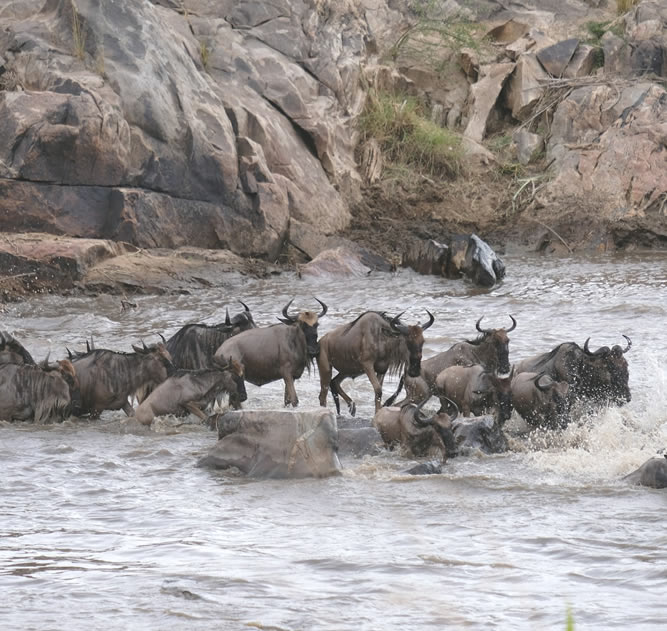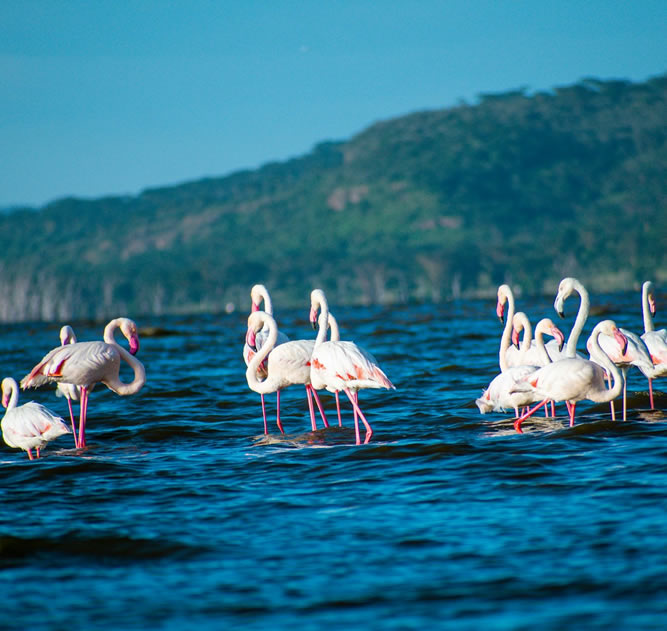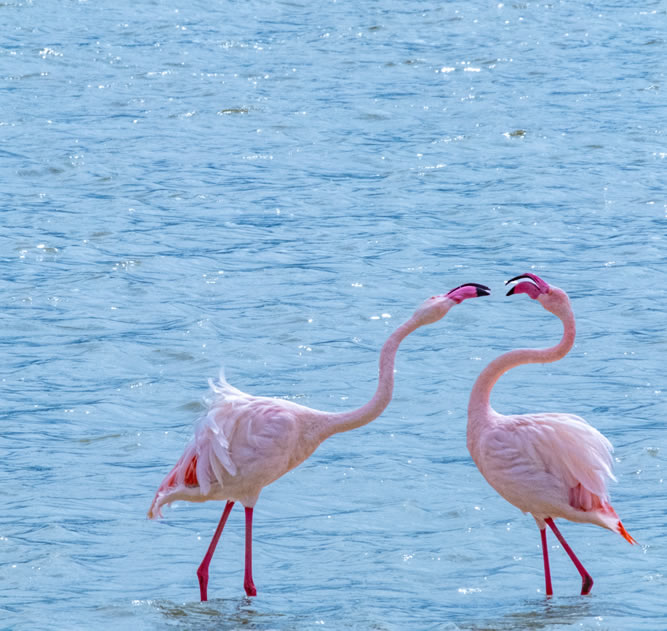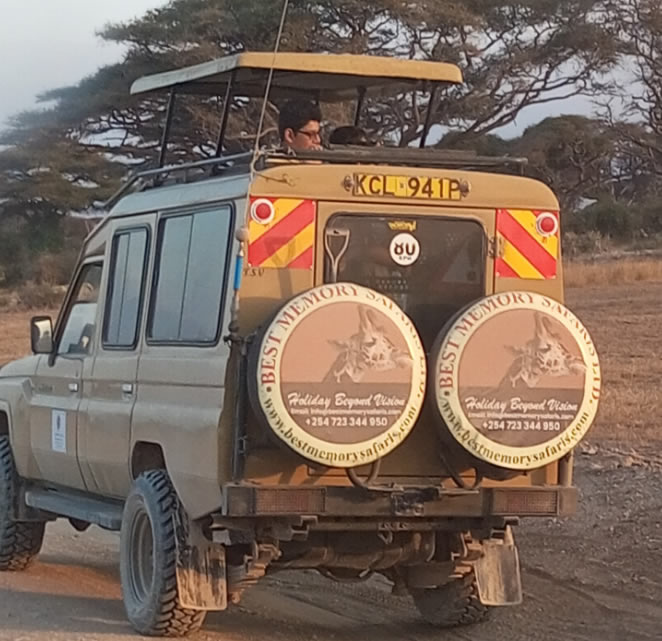



| Days | 6 Days 5 Nights |
|---|---|
| Highlights | Sightseeing Tours, Adventure Tours, Safari Tours |
| Transport | Jeep afari |
A 6-Day Migration Safari in Kenya is an incredible opportunity to witness the Great Migration—one of the most spectacular natural phenomena on Earth. The safari would primarily focus on the Masai Mara, where millions of wildebeest, zebras, and gazelles migrate across the plains in search of fresh grazing land, and predators such as lions, cheetahs, and crocodiles follow closely behind.
As your safari begins, you’re welcomed by the fresh morning air, the sounds of birds and distant wildlife, and the sight of a vast African landscape stretching before you.
Day 1: Nairobi – Lake Nakuru National Park – 67 Airport View Hotel (B D)
On arrival at the Airport, you get a very warm welcome by our representative then get a transfer to the Hotel where you will get a rest and refresh from the long flight.
Day 2: Lake Nakuru National Park – Lake Nakuru Safari lodge
After breakfast, we will then have a first highlight of the tour briefing and proceed to Lake Nakuru National Park. Here, we visit Lake Nakuru as the most well-known lake of the Rift Valley. For being famous all over the world for its flamingos, the lake is one of the natural wonders of the world. At times, there are up to 2 million flamingos at the lake, which form a beautiful pink ribbon around the shore. In addition to seeing this amazing scenery, we also have a good chance of seeing rhinos and leopards. All the meals will be taken at our lodge .From our lodge we have a magnificent view over the lake.
Day 3: Masai Mara – Mara Osero Tented camp (B L D)
After an early safari and breakfast we drive to the Masai Mara National Reserve which is considered as one of the largest and most beautiful protected areas of Kenya and reveals an insight into the originality of Africa. After lunch on-site, we embark on the first game drive through the savannah landscape of the Masai Mara Game Reserve, with a good chance to track down the Big Five (elephant, buffalo, lion, rhino, and leopard). Come back for dinner and overnight
Day 4: Masai Mara Natioanal Reserve – Mara Osero Tented Camp (B L D)
After breakfast, we embark on a full day game drive in the Masai Mara. This park is famous for its savannah landscape and its wildlife. The prospects are good to observe all those fascinating animals that can usually only be seen in numerous nature documentaries. We will have a picnic at the Mara River, bordering the Serengeti. The river is part of the Masai Mara-Serengeti ecosystem, which is particularly known for the largest wildlife migration on earth in the world. Every year, the huge animal trains cross the brown, foaming river full of crocodiles.
Day 5: Masai Mara National Reserve. –Lake Naivasha Sopa lodge (B L D)
After our breakfast, we will depart Masai Mara and drive to Lake Naivasha which stands at the highest attitude among all the Rift valley lakes, the lake attracts very many species for birds and is a very nice place for the bird watchers, arrive in time for lunch and after a short break in the afternoon, you will be do a boat trip in the lake where you have a chance to watch the hippos and different species of birdlife, dinner and overnight at the lodge
Day 6: Lake Naivasha – Nairobi (B L )
After our breakfast and depending on the next destination or flight timing, we will drive to Nairobi where you will be dropped off.
PRICE INCLUDES
All park entrance fees
All game drives and transfers in a good customary minibus or Land cruiser on safari
Unlimited game drives up to 6pm (sundown)
Breakfast (B) / lunch (L) / dinner (D) as indicated
Accommodation in a double room in mentioned accommodations or similar
Local English speaking driver guide.
Enough bottled water each day
Detailed travel information.
PRICE DO NOT INCLUDE
International flight.
Visa for Kenya (about USD 50)
Beverages
Tips
June to October and January and February
June to October and December to March
April and May
June to October
March, April and May (Peak of the Wet season)
GROUP OR PRIVATE, 4×4 JEEP SAFARI Kwetu Safari Safari Tour features Days 8 Days 7 Nights Highlights Sightseeing Tours, Adventure Tours, Safari Tours…
GROUP OR PRIVATE, 4×4 JEEP SAFARI WILD CHEKERS SAFARI Tour features Days 9 Days 8 Nights Highlights Sightseeing Tours, Adventure Tours, Safari Tours…
GROUP OR PRIVATE, 4×4 JEEP SAFARI True African wilderness safari Tour features Days 9 Days 8 Nights Highlights Sightseeing Tours, Adventure Tours, Safari…
Trustindex verifies that the original source of the review is Google. Trustindex verifies that the original source of the review is Google. Trustindex verifies that the original source of the review is Google. Trustindex verifies that the original source of the review is Google. Trustindex verifies that the original source of the review is Google. Trustindex verifies that the original source of the review is Google. Trustindex verifies that the original source of the review is Google. Trustindex verifies that the original source of the review is Google. Trustindex verifies that the original source of the review is Google. Trustindex verifies that the original source of the review is Google.
Best Memory Safaris operates on excursions and safaris in East Africa. we also offer tailor made tour programs which specially fit your travel plan, including Mountain trekking,walking safaris and Social project visits. Our Kenyan office is located on the South Coast of Mombasa at Diani Beach and managed by a Team of seasoned professionals. We pride over 15 years experience and international class exposure in safari business.
No WhatsApp Number Found!
WhatsApp us